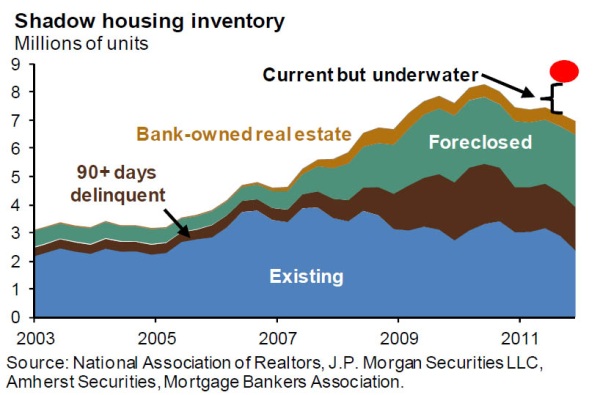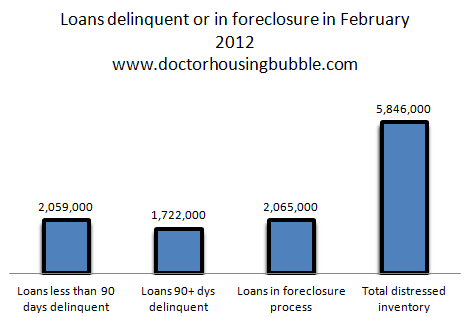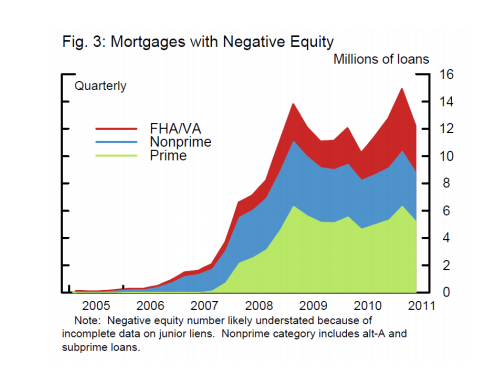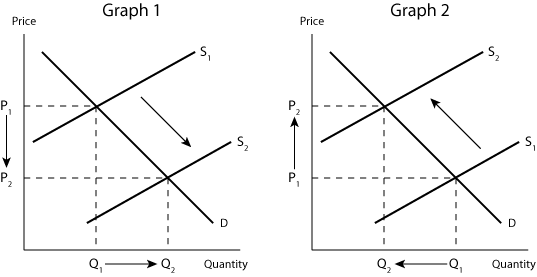Shadow inventory coming online in 2012 is going to have the biggest impact on the housing market. With a weak jobs report that shows a labor force that declined by 164,000 you realize thatdemographic trends are now in full play here. With banks now moving on delinquent properties the supply will be moving higher while traditional inventory remains low. This is happening. We noted that in Southern California, over 50 percent of all MLS inventory is now composed of short sales showing that banks are now willing to sell homes for less than the original mortgage balance. One of the more interesting trends is the aggressive pricing we are seeing on some of these listings. Of those in actual foreclosures, nearly half have made no mortgage payment in two years. Now that banks are moving on these properties that hidden stimulus will be pulled away. Think about not paying rent or a mortgage for two full years. Let us take a look at the current state of the shadow inventory.
Distressed inventory pipeline
You need to remember that the first two columns rarely show up on the MLS. These homes have yet to even hit the foreclosure process so do not show up as inventory. These are simply home owner’s not making payments on their home for a variety of reasons. Cure rates have been pathetic so most of these will end up as foreclosures. Then you move to the loans in foreclosure category and many are not on the MLS as well. You have the three stages of foreclosure:
-Notice of default is filed (at least three missed mortgage payments)-NTS (scheduled for auction)-REO (bank owned)
Even when a property becomes bank owned, it may take months (a year) to get it on the MLS. In total over 5,800,000 properties are delinquent or in some stage of foreclosure. When the existing inventory is looked at only a small part of the picture is shown:


Existing inventory has trended lower since 2007 and many analysts simply look at this as if this was the only measure of housing inventory. This only reflects roughly 2 million properties while another 7 million properties are either:
-90+ days delinquent-In the foreclosure process-Bank-owned real estate-Current but underwater
So what you have is a giant pool that isn’t viewable to the public but is slowly leaking into the blue category. That is, the existing category has room to grow simply because the other pipelines are so enormous and one option is to get out ahead of the curve by allowing short sales. With home prices making post bubble lows and household incomes stagnant for well over a decade, there is little reason to see pressure for higher prices. As we noted with a shrinking labor force because of lower paying jobs or people dropping out of the labor force where will pressure for higher prices come from? Mortgage rates are artificially low thanks to the Federal Reserve and with low down payment loans like FHA insured loanproducts the leverage capacity is at a maximum for buyers to stretch into a property. Rates are unlikely to go lower and we know FHA loans will get more expensive in the upcoming months because default rates are soaring. What a shocker that allowing people with almost no down payment to buy expensive homes is causing further issues.
A mini stimulus will also be lost as more of those living in their homes payment free will lose that advantage:
“Vigeland: So first of all, can you give us a sense of how prevalent this is? What are the numbers of people who are squatting in their own homes?Feroli: Well, right now you’re looking at about 8 percent mortgages outstanding are past due and there are about 44 million mortgages out there. So you’re talking about a pretty significant number of people who right now are not paying their mortgage.Vigeland: Wow. So how did you come up with the estimate of a $50 billion impact here?Feroli: Right. So there’s about $10 trillion in mortgage debt owed by the household sector. So you’re looking at about $800 billion in mortgages, which are past due — average interest rate of about 6 percent or a little above. Most of those mortgages, of course, are in the early stage when it’s mostly interest that you’re paying. So 6 percent on a little over $800 billion comes out to about $50 billion per year that are free for other purposes.”
$50 billion is nothing to sneeze at. As more short sales pop up on MLS searches every day it looks like this trend will be coming to an end.
Underwater nation
Approximately 12 million Americans who “own” their home owe more on the property than what the property is worth today. So as more properties enter the pipeline there is little reason to believe the demand curve will shift up. For the short-term, we will likely see a move for the supply side:
This is exactly what is happening and why home prices continue to fall. For example, the mid-tier market in Southern California has seen home prices fall by 8 percent in the last 24 months. Why? This is partly due to more short sales hitting the market and a large demand for lower priced properties based on stagnant household incomes. So as more of these homes leak into the inventory why should we expect some sort of reversal of the trend?
It seems like many in the press are acknowledging this second test for the housing market. Now what can mitigate this from happening? If we see strong job gains in good paying fields and household incomes rising then there is reason to argue for higher home prices. Simply to argue that home prices will go up because “inflation” will pick up is missing the point. We are seeing global goods like fuel and food going up because these can be shipped anywhere and thanks to the Fed, the dollar is getting hit. With housing however, it is a local good so therefore local household incomes do matter and this is what we are seeing. A place like Las Vegas with a large number of low paying service sector work is now seeing homes sell way below $100,000. This makes sense given their local demographics. Here in California every segment of the market has seen major price declines.
As more shadow inventory hits the market the supply curve is likely to increase even though some analysts might only narrowly focus on the existing MLS inventory that only highlights a small part of the total picture. This is missing the next trend like arguing Alt-A and subprime loans were a good thing just because defaults initially were extremely low. The demand side can shift but only if incomes go up and employment really picks up. Also, many younger Americans are saddled with high levels of student debt and are making less money. So who will many of these older home owners sell homes to? Certainly not at price levels they would hope to get. Yet banks control a large part of the inventory and short sales and foreclosure sales will dominate in many markets because prices are more set to what the market will support. After half a decade and with housing making nominal lows it looks like some are finally getting it that those nostalgic high prices are unlikely to ever come back again.






No comments:
Post a Comment